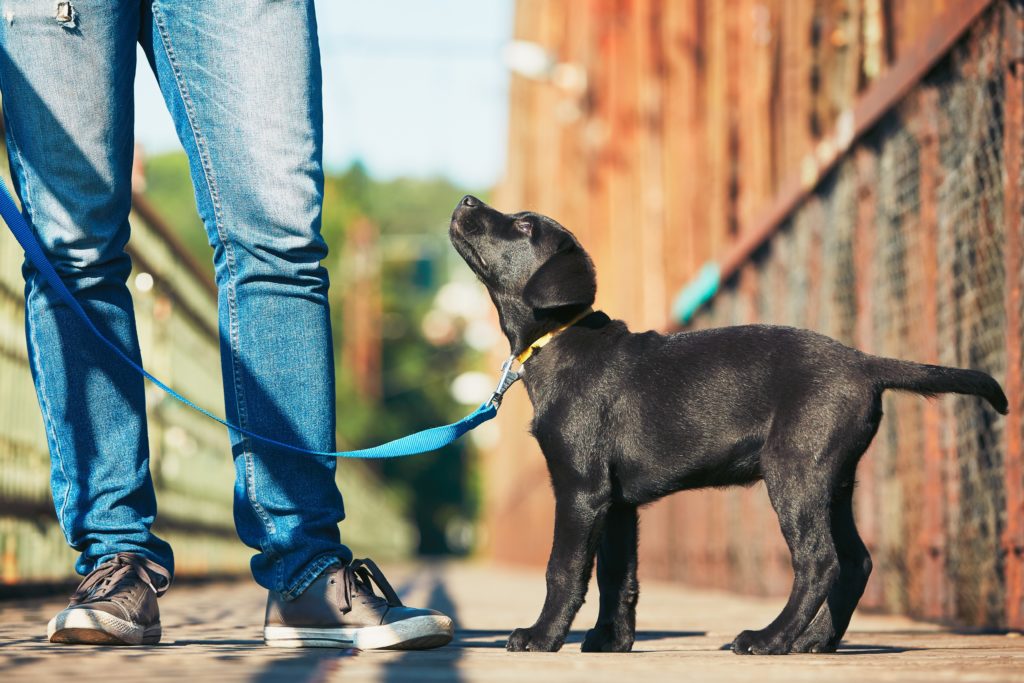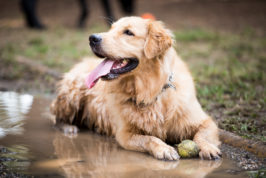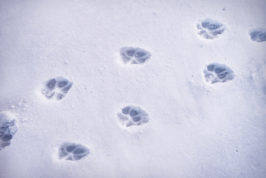If you’re a pet parent already, or aspire to be one, you’ll want to be clued up on the most common health issues in dogs. This can help you look after your canine companion, ensuring that you keep a close eye out for symptoms and seek help from a veterinarian when required. It can also help you choose the breed and age of dog that might be best suited to you, your family, and your lifestyle.
Common health issues in dogs
Here are some common health issues in dogs listed by breed, age, and symptom:
Dog health issues by breed
Many breeds are prone to certain health conditions. Below is a list of some of these breeds and the common health conditions they are prone to. If you notice any of the signs of these conditions, speak to your vet about your options.
Beagle

- Epilepsy
- Intervertebral Disc Disease
- Intervertebral Disc Disease (IVDD) is a condition where the discs that lie between the spinal vertebrae degenerate and ‘slip out’, causing pressure on the spinal cord.
- Can it be treated? Some cases can be treated by specialist surgery to remove the damaged disc, but the paralysis is sometimes permanent.
- Symptoms: include signs of severe back pain, including vocalisation and an arched back. You may see your dog dragging their hind legs or seeming drunk and wobbly. They may also lash out when touched, due to the pain. As time goes on, you may notice that they have no sensation in their hind legs.
- If you think that your dog might have IVDD, it is crucial to contact your vet for an emergency appointment right away. IVDD is not only very painful, but it’s also most treatable if it’s caught early.
- Steroid Responsive Meningitis
- Steroid Responsive Meningitis (SRM) is a painful inflammatory condition of young dogs, especially Beagles, Bernese Mountain Dogs, and Weimaraners. It causes a fever, spinal pain, severe lethargy, and sometimes even causes paralysis or seizures. The exact cause is unknown, but it is thought to be due to an over-active immune system where the body’s own cells are targeted. It is treatable with steroid medication but affected dogs can sometimes relapse.
- Symptoms of SRM include extreme lethargy, back pain, and reluctance to move, eat, or drink. Occasionally, affected dogs develop paralysis or seizures.
- If you think that your dog has symptoms that might mean they have SRM, speak to your vet right away. Luckily, SRM tends to respond well to medication, however, until treatment begins dogs can feel very unwell.
Bulldog

- Brachycephalic Obstructive Airway Syndrome
- Brachycephalic Obstructive Airway Syndrome (BOAS) is a term used to describe the breathing difficulties experiences by certain breeds. Brachycephalic dogs have a squashed face, short nose, narrow nostrils and long soft palate. They can also have bulbous soft tissue at the back of their throat and a narrow windpipe. This combination of anatomy means that they can struggle to breathe, especially when it’s warm. Thankfully, there are surgical options to widen the nostrils, shorten the soft palate and reduce additional tissue in the throat. This treatment can often improve affected dogs’ symptoms.
- If your dog suffers with BOAS you might notice them snoring and snorting a lot or breathing particularly noisily. In extreme cases you might notice that their gums are pale or slightly blue, or that they have episodes where they ‘pass out’.
- If you have a brachycephalic breed and you think that your dog might not be able to breathe normally, make sure you speak to your vet about treatment options and take care to keep them cool during warm weather.
- Dystocia (trouble giving birth)
- Some breeds, like bulldogs, are selectively bred to have such large heads that the puppies often don’t fit through the mother’s pelvis during labour. This can cause puppies to become stuck, which is an emergency and can threaten the life of both the puppy and the mother. A caesarean section is the only treatment if there is a size mismatch, and many breeders will try to arrange an elective caesarean because the chances of dystocia are so high.
- If your dog is in labour and has been straining (having contractions) for thirty minutes without producing a puppy, this is a sign that there is an obstruction.
- If you are concerned that your bitch’s labour is not going to plan, always call your veterinarian and make an emergency appointment without delay.
- Cherry eye (prolapsed nictitans gland)
- The nictitans gland sits within the third eyelid and helps to produce your dog’s tear film. This tear film keeps the eye healthy. In some young dogs, the nictitans gland can become prolapsed. The cause is unknown, but some breeds are prone including Bulldogs, Lhasa Apsos, Great Danes, Cocker Spaniels, and Beagles. Glands can be replaced surgically, although the prolapse can recur. Cherry eyes should never be surgically removed because this can lead to dry eye due to lack of tears.
- You can spot if your dog has a cherry eye because they will have a bulge or lump of red tissue in the inner corner of their eye.
- If your dog has a cherry eye, or you have any concerns with their eyes in general, it’s important to get them checked over by a vet.
- Entropion
- Entropion is the term for when a dog’s eyelids scroll inwards, so that the haired skin is contacting the surface of the eye. The friction from the hair can cause damage to the surface of the eye, leading to a corneal ulcer. Usually, entropion needs to be treated with surgery to change the position of the eyelids, and dogs normally recover very well.
- Dogs with entropion normally show signs that their eyes are sore, by squinting or pawing at their face. They often get conjunctivitis and eye infections so you may also notice yellow or green discharge from the eyes.
- Entropion is something that dogs can be born with, or it can develop over time. If you think your dog has sore eyes or might have entropion, you must arrange an appointment at your vet clinic to discuss treatment options.
- Ear infections
- Hair loss
- Interdigital cysts (cysts between the toes)
Bassett Hound

- Ear infections
- Elbow Dysplasia
- Elbow Dysplasia is a condition where the elbow joints do not develop correctly. There is a genetic basis to the condition, so many large breed dogs are screened before breeding. Elbow Dysplasia often doesn’t become apparent until around a year old, and without treatment affected dogs become debilitated with joint pain and, over time, Arthritis. Although there are surgical options, medical and conservative management can also help to manage the condition. Things like keeping your dog at a healthy weight and controlling their exercise can be really helpful.
- Dogs with Elbow Dysplasia tend to limp on one or both front legs during or after exercise. The limp can become gradually worse, and severely affected dogs can struggle to walk due to pain.
- It’s understandable to feel apprehensive about seeing the vet if you think your young dog might have Elbow Dysplasia. However, without treatment your dog may face a lifetime of joint pain, so make an appointment with your vet.
- Glaucoma (increased pressure in the eye)
- Entropion
Cavalier King Charles Spaniel

- Mitral Valve Disease
- Mitral Valve Disease is a heart condition caused by a leaky heart valve. When blood leaks through the valve, it means the heart can’t pump so effectively, and this eventually leads to Congestive Heart Failure. Although medication doesn’t cure mitral valve disease, it can delay symptoms and help your keep your pet well for longer. When Congestive Heart Failure does develop, there’s medication to help with that too.
- Early on Mitral Valve disease has no symptoms aside from a heart murmur, which your vet might be able to hear. However, over time affected dogs can develop a cough and can tire more easily.
- If Mitral Valve Disease is caught early, your vet may be able to prescribe a medication that will help the heart pump more effectively. This can help the heart keep functioning for longer and delays the onset of heart failure. Your vet will listen to your dog’s heart regularly, but if you notice any of the symptoms of MVD you should take your dog for a check-up.
- Luxating patella
- A luxating patella is when the ligaments which hold the kneecap in place are loose, meaning that the kneecap can move side to side. You can read about this condition here.
Cocker Spaniel

- Dilated Cardiomyopathy (DCM)
- DCM is a heart condition where the heart can’t pump effectively. In dogs with DCM, the heart becomes enlarged with thin walls and is unable to fully contract. Not only is the heart unable to pump well, it’s also unable to keep its normal rhythm. Medications can help keep the heart functioning correctly and stop any abnormal rhythms.
- Sadly, sometimes there are no symptoms in affected dogs, and they can collapse suddenly.
- If you have a dog whose breed is commonly affected by DCM, you can arrange a screening test to check for the condition.
- Haemolytic Anaemia
- Haemolytic Anaemia is a condition where the immune system is over-sensitive and recognises the dog’s own cells as foreign. In this condition, the dog’s body attacks its red blood cells, reducing its ability to carry oxygen in the blood. It’s common in spaniel breeds and can be treated with drugs to suppress the immune system. In severe cases, a blood transfusion may be necessary, and sadly it can be fatal.
- Dogs with Haemolytic Anaemia may initially be lethargic and off their food. However, as times goes on their breathing may become fast or laboured and they may have pale gums. They may also collapse or struggle to stand.
- If you own a spaniel breed and you think they are unwell and may have Haemolytic Anaemia, they must be seen by a vet as an emergency so that blood tests can be performed to confirm the diagnosis.
- Glaucoma
- Progressive Retinal Atrophy (PRA)
- PRA refers to a group of conditions that cause gradual blindness. These conditions are inherited, and many dog breeds are predisposed. Screening tests are now available for this condition due to its genetic basis. Sadly, there is no treatment for PRA, but many blind dogs live a long and happy life.
- PRA causes dogs to lose their sight gradually, over time. The first signs are often poor night vision or a reluctance to go out at night, but this can progress to walking into walls or furniture.
- Although there is no treatment for PRA, it is still sensible to see a vet if you think your dog is losing their sight, since other causes of blindness can be treated.
Dachshund

- Intervertebral Disc Herniation
- Progressive Retinal Atrophy
Dalmatian

- Bladder or kidney stones (dalmatians form urate crystals in their urine)
- Hip Dysplasia
- Deafness
- Epilepsy
Doberman

- Dilated Cardiomyopathy
- Hip Dysplasia
- Wobbler Syndrome (an abnormality of the spine at the level of the neck)
French Bulldog

- Brachycephalic Obstructive Airway Syndrome
- Dystocia
- Degenerative Myelopathy
- Degenerative Myelopathy is a condition that causes gradual paralysis. Myelin is type of tissue that coats nerves to help them transmit signals. In dogs with Degenerative Myelopathy, this myelin degenerates, causing a reduction in nerve function. Over time, more and more myelin breaks down and symptoms worsen. Unfortunately, there is no treatment for Degenerative Myelopathy, and most dogs require euthanasia once their symptoms affect their quality of life.
- Dogs with Degenerative Myelopathy may initially seem weak and wobbly on their legs, and this can progress to paralysis of all four legs.
- Despite there being no treatment for Degenerative Myelopathy, your vet will be able to make a diagnosis and help you keep your dog’s quality of life good for as long as possible. They will also be able to support you when it’s time to say goodbye.
German Shepherd

- Hip Dysplasia
- Elbow Dysplasia
- Degenerative Myelopathy
- Spondylosis
- Spondylosis is a condition where extra bone grows on the edges of the spinal vertebrae. As more and more new bone is formed; vertebrae can become connected by a bridge of bone. Although there is no cure, spondylosis can be managed with pain relief and anti-inflammatory medications.
- Symptoms of spondylosis include stiffness, back pain, and a reluctance to jump or use stairs.
- Spondylosis can be a very painful condition, so it’s really important to speak to your vet if you think that your dog might be suffering with the condition.
- Gastric Dilatation and Volvulus (GDV)
- GDV is a term for when the stomach becomes bloated and twists. It is common in large or giant breed dogs and is especially likely if dogs exercise soon after eating. A GDV can rapidly be fatal as it causes severe strain on the body’s circulatory system. However, surgical treatment can be successful if it happens quickly.
- Symptoms of a GDV are quite specific. Affected dogs have episodes of unproductive retching and gagging but are often unable to vomit due to the twist in the stomach. You will likely also notice a drastic change in your dog’s body shape, where their abdomen appears very round and bloated.
- A GDV is an emergency, and you must make contact with your vet immediately if you think your dog might have the condition.
Great Dane

- Entropion
- Hip Dysplasia
- Wobbler Syndrome
- Dilated Cardiomyopathy
- Megaoesophagus
- Megaoesophagus is a condition where the oesophagus becomes enlarged and baggy. Normally, the body relies on the oesophagus to move food from the mouth to the stomach, but because the oesophagus is so big, food pools there instead of entering the stomach. This can lead to regurgitation of food, which can be inhaled into the airway, causing aspiration pneumonia. There is no cure for megaoesophagus, although some medications can help.
- Dogs with Megaoesophagus tend to regurgitate soon after eating or drinking. It’s important to spot whether your dog is vomiting or regurgitating, since this helps with diagnosis. Unlike vomiting, regurgitation does not involve any abdominal effort or retching.
- Although Megaoesophagus can’t be cured, your vet will be able to help you manage the condition. For example, it helps to offer food and water to affected dogs from a height, rather than ground level.
- Bone tumours
Labrador

- Hip Dysplasia
- Progressive Retinal Atrophy
- Elbow Dysplasia
- Epilepsy
- Cruciate Ligament rupture
- There are two cruciate ligaments within each knee joint. The cruciate ligament can become damaged either due to trauma, or due to wear and tear in susceptible dogs. You can find out more about Cruciate Ligament Rupture and Cruciate Disease here.
- Obesity
Newfoundland

- Hip Dysplasia
- Entropion
- Elbow Dysplasia
- Cruciate Ligament rupture
- Gastric Dilatation and Volvulus
Poodle

Miniature and Toy Poodles:
- Progressive Retinal Atrophy
- Luxating patella
Standard Poodles:
- Cataracts
- Hip Dysplasia
Pug

- Brachycephalic Obstructive Airway Syndrome
- Luxating patella
Shar Pei

- Entropion
- Shar Pei fever
- Shar Pei fever is an autoinflammatory condition where the body attacks its own cells and tissue. It causes fever, and inflammation of the ears, skin, joints, and kidneys. Shar Peis often first develop the condition before 18 months of age, and relapses are common. It is a genetic condition, so dogs can be tested to see if they are susceptible to developing it. Although there is no cure, flare ups can be treated medically, as long as the kidneys are not damaged.
- Symptoms of Shar Pei fever are lethargy, lack of appetite, fever, vomiting, joint swellings, weight loss and recurrent ear infections.
- There is no cure for Shar Pei fever, but it’s still essential to take your dog to the vet if you think they might have it. Anti-inflammatory medications as well as medications to reduce the fever are crucial to managing the condition. Your vet will also be able to do a blood test to check your dog’s kidney function, to ensure that there is no damage.
- Atopic dermatitis (an allergic skin condition)
- Hypothyroidism
- Dogs with hypothyroidism have an underactive thyroid gland. This slows the metabolism and causes changes to your dog’s skin and hair coat, as well as their weight. Hypothyroidism can be treated with thyroid hormone supplements.
- Symptoms of hypothyroidism include depression, lethargy, weight gain, a scurfy coat, and hair loss.
- Although it’s not an emergency, dogs with hypothyroidism can improve quickly with the correct medication. So, if you think your dog might be hypothyroid, call your vet practice to make an appointment to discuss it with your vet.
Springer Spaniel

- Haemolytic Anaemia
- Cataracts
- Entropion
- Glaucoma
- Hip Dysplasia
- Epilepsy
St Bernard

- Hip Dysplasia
- Elbow Dysplasia
- Gastric Dilatation and Volvulus
- Entropion
- Bone tumours
- Cruciate Ligament rupture
Old dog health issues

Arthritis
Older dogs are prone to Arthritis, due to a lifetime of wear and tear on their joints.
Organ failure
This wear and tear also applies to an extent to their internal organs, and so older dogs can commonly get liver, kidney, and heart disease.
Dental disease
Perhaps another case of wear and tear; dental disease is most common in older dogs. Don’t be disheartened though, toothbrushing and good home care can help to keep your dog’s teeth healthy.
Tumours
Sadly, the risk of cancer increases with age, just like in people, so older dogs are more likely to develop tumours.
Obesity
As a consequence of Arthritis, and sometimes other ailments too, old dogs are more likely to be obese, which in turn makes their mobility even worse.
Young dog health issues

Hernias
Young dogs can have hernias of their umbilicus (belly button), groin, or scrotum. Some require surgery to fix but others are small and harmless.
Retained deciduous teeth
Just like humans, puppies have baby teeth that fall out when their adult teeth are ready to come through. This usually happens at around 6 months of age. If a baby tooth fails to fall out on its own, it might need to be removed by your veterinarian.
Undescended testicles
Sometimes, puppies’ testicles do not find their way to the scrotum and remain within the abdomen or in the groin. The temperature difference can cause the testicles to become cancerous later in life, so if they don’t reach the scrotum by 6 months, your veterinarian will recommend surgery to remove them.
Heart murmurs
It’s quite common for puppies to have heart murmurs. Sometimes, these are so-called “puppy murmurs,” which disappear with age. However, sometimes they can be a sign that the heart hasn’t developed properly. Your veterinarian will be able to advise on what to do if they hear a heart murmur.
Portosystemic Shunt (liver shunt)
When some puppies’ livers develop in the womb, they develop an abnormal blood vessel that allows toxins from the gut to circulate in the bloodstream, causing seizures, nausea, and poor development. In some cases, surgery can be performed to correct this condition.
Dog health issues by symptoms
Vomiting
Many dog health issues cause vomiting. If your dog has eaten something they shouldn’t have, which could cause an obstruction or damage to the gut, this may cause vomiting. Infections, inflammation, or tumours of the stomach or intestine can also cause vomiting.
It is crucial to recognize if your dog is trying to vomit but unable to. This unproductive retching is a sign of Gastric Dilatation and Volvulus, which can be fatal.
Diarrhoea
Just like vomiting, there are many causes of diarrhoea. Diarrhoea can also be caused by damage from foreign material, or by infection, inflammation, or tumours of the intestine. Other causes of diarrhoea include worms and dietary sensitivity.
Weight loss
Weight loss can be a consequence of reduced appetite, vomiting, or diarrhoea. It can also be a sign of Diabetes Mellitus, certain tumours, and worms.
Frequently asked questions
No dog breed is guaranteed to be healthy. However, dog breeds with the fewest health issues include Chihuahuas, Greyhounds, Maltese, and Poodles. On the other hand, if you’re not set on a pedigree breed, the dogs with the fewest health issues tend to be crossbreeds.
While only your veterinarian will be able to do a full physical examination, there are a few things you can do at home to check your dog’s health. Firstly, think about their behaviour and habits and whether they are normal. This would include their appetite, drinking habits, toileting, and energy levels. It’s also worth considering any symptoms they might have, including vomiting, diarrhoea, weight loss, or weight gain.
If you are concerned that your paw-some pal has a health issue, it’s always worth making an appointment with your veterinarian. They will be able to check them over, give advice and medication, and hopefully get them back to their normal self as quickly as possible.




